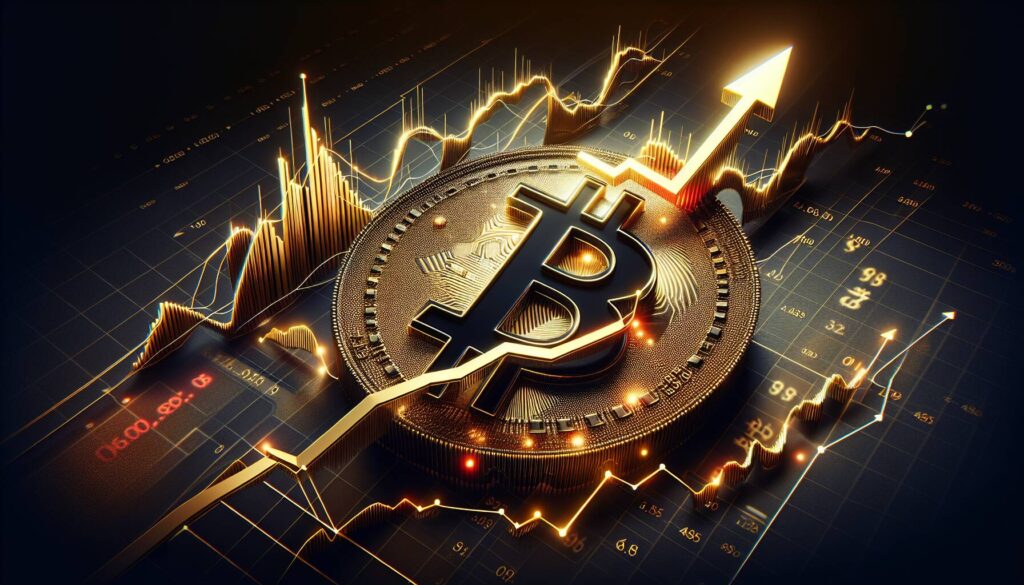The cryptocurrency world buzzes with excitement following the recent launch of Unichain, the highly anticipated layer-2 network by Uniswap. This development has triggered a notable uptick in the price of Uniswap’s governance token, UNI, which rose by approximately 4.5%, landing at around .7. However, despite this surge, UNI’s value has struggled to surpass the threshold. Interestingly, UNI’s performance has outpaced Bitcoin (BTC), which has dipped by about 0.3% over the same period.
As the Unichain launch unfolded, enthusiasm in the community soared, evidenced by a 30% increase in social media discussions about UNI. Recent data from TheTie indicates that over 1,400 posts were made, with around 41% exhibiting a positive sentiment and 48% being neutral. This positive atmosphere had been brewing even before the launch, with a significant rise in social media engagement leading up to the event.
Within hours of its debut, Unichain has already made impressive strides. The Unichain block explorer reports that the network has achieved 15,000 active wallets and processed nearly 100,000 transactions on its first day alone. Highlighting this achievement, Hayden Adams, the CEO of Uniswap Labs, shared an optimistic vision for the protocol, detailing plans for enhancements that aim to bolster blockchain scaling. These improvements are set to include faster block times, optimized user returns from maximal extractable value (MEV), and increased economic security alongside enhanced interoperability.
“In other words, relentless shipping will continue until Ethereum scales and DeFi is bigger than tradfi + cefi combined. In just four months of testnet, the network processed ~100M transactions. Now it’s live with 80+ projects already building on top (plus Uniswap + v2, v3, and v4 deployments already live),” Adams expressed on social media.
As the narrative unfolds, Unichain’s launch represents not just a leap forward for Uniswap, but a significant chapter in the broader DeFi landscape, marking a pivotal moment in the ongoing evolution of decentralized finance.

Impact of Unichain Launch on UNI Token and Decentralized Finance
The launch of Unichain has created a significant stir in the decentralized finance (DeFi) space, particularly for Uniswap’s governance token, UNI. Here are the key points to consider:
- Price Increase:
- UNI’s price rose by approximately 4.5%, reaching around .7.
- Despite this rise, it failed to break the mark.
- Performance vs Bitcoin:
- UNI outperformed Bitcoin (BTC), which is down around 0.3% in the past 24 hours.
- Social Sentiment:
- Social media activity surrounding UNI increased by 30%, with over 1,400 posts.
- Approximately 41% of these posts were positive, and 48%
- Active Network:
- Unichain achieved 15,000 active wallets within hours of launch.
- It successfully processed nearly 100,000 transactions on its first day.
- Future Developments:
- CEO Hayden Adams mentioned multiple upcoming improvements, including:
- Reduced block times to enhance transaction speed.
- Mechanisms to return most maximal extractable value (MEV) to users.
- An additional layer of economic security.
- Seamless interoperability for integrating with other networks.
- Adams emphasized a commitment to scaling Ethereum and expanding DeFi’s presence relative to traditional finance.
- CEO Hayden Adams mentioned multiple upcoming improvements, including:
“In just four months of testnet, the network processed ~100M transactions. Now it’s live with 80+ projects already building on top.” – Hayden Adams, CEO of Uniswap Labs
Unichain Launch: A Game Changer for Decentralized Exchanges
The recent unveiling of Unichain, a layer-2 network from Uniswap, has markedly improved sentiment within the crypto community, evidenced by UNI’s commendable 4.5% surge. This rise transpired while Bitcoin is experiencing a slight decline, showcasing Unichain’s competitive edge in the decentralized finance (DeFi) arena. The spike in social media engagement around UNI demonstrates growing interest and optimism, with a noteworthy 30% increase in discussions, of which a significant portion reflects positive sentiments. This influx of attention could position Unichain favorably against competitors, particularly in a market increasingly dominated by swift transaction capabilities and enhanced user experience.
However, the fact that UNI couldn’t quite break the barrier while flourishing post-launch reveals a potential weakness; market expectations may be overly ambitious or hesitant. Investors may interpret this stagnation as a sign of vulnerability in the broader crypto landscape, particularly when contrasted with the price behaviors of other leading tokens. Furthermore, the rapid rise in active wallets and transaction numbers—over 15,000 wallets and nearly 100,000 transactions within mere hours—illustrates a solid foundation but also sets a high benchmark for future performance. If these transaction numbers don’t sustain growth, it may raise questions about the longevity of user interest and investment in the platform.
Unichain’s immediate success could certainly benefit cryptocurrency traders and investors seeking more robust liquidity and lower transaction costs. Moreover, DeFi developers and projects looking for scalable solutions may find significant advantages in Unichain’s interoperability and economic security features. However, there’s potential for disruption among existing layer-1 protocols and traditional exchanges that may struggle to keep pace with the advancements Unichain promises. Fluctuations in UNI’s performance can create challenges for traders overly reliant on token price movements, especially if community enthusiasm dwindles.
Overall, while Unichain heralds exciting developments for Uniswap and its governance token, the evolving narrative around its adoption and sustained use will be crucial for ensuring long-term viability in an ever-competitive crypto marketplace.
















